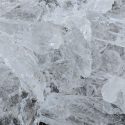What is Sodium Aluminum Sulfate (E521) in Baking powder? Uses, Safety, Side effects

Production | Uses | Safety | Side effects
Sodium aluminum sulfate (SAS), also known as sodium alum, a type of alum that is used in baking powder with the European food additive number E521. Its primary uses are in bakery and its purpose is as a slow-acting leavening acid in baking powder.
How is Sodium Aluminum Sulfate Made?
SAS can be commercially produced by the reaction of sodium sulfate solution with aluminum sulfate solution. The following is the chemical reaction equation:
Al2(SO4)3·18H2O+Na2SO4+6H2O→2[AlNa(SO4)2·12H2O]
Property
| Other names | Aluminum sodium sulfate, Soda alum |
| CAS number | 7784-28-3 |
| Chemical formula | AlNa(SO4)2 · H2O (anhydrous), AlNa(SO4)2 · 12H2O (Dodecahydrate) |
| Molecular weight | 242.09 (anhydrous) |
Solubility
Dodecahydrate is freely soluble in water, while the anhydrous form is slowly soluble in water. Both types are insoluble in ethanol.
Is sodium aluminum sulfate basic or acidic?
It is a weak acid. It dissociates Al3+ when dissolved in water and reacts with water to release H+. The following is the reaction equation:
Al3+ + 3H2O — AI(OH)3 + 3H+
What’re the Uses of Sodium Aluminum Sulfate?
SAS primarily functions as a leavening acid in baked goods such as in the production of cake, pancakes, cookie, biscuit, and muffins. This ingredient can also be used as a PH regulator and firming agent in food.
However, it is not widely used and usually not used alone as it almost doesn’t react with baking soda at room temperature. Meanwhile, its uses in food are decreasing over time in Europe due to the change in legislation coming into force in February 2014, where the applications are only in two categories: candied cherries and only egg white. (1)
SAS is a slow-acting leavening acid and commonly mixed with monocalcium phosphate (a fast-acting leavening acid), baking soda (alkali) and corn starch (moisture absorber) as double-acting baking powder. Double-acting baking powder contains two types of leavening acids, which react with sodium bicarbonate to release carbon dioxide at different times during baking.
The first acid (monocalcium phosphate) reacts with sodium bicarbonate immediately when mixed with the water. Sodium aluminum sulfate reacts with baking soda with the condition of oven heat because a higher temperature is needed to make SAS dissolved in water so that reaction can take place.
The reaction principle of SAS with baking soda:
Al3+ + 3HCO3- — AI(OH)3 +3CO2
The following food may contain it:
- Cakes, pastries, donuts, crackers and pies
- Tortillas
- Cheese (to increase its acidic nature)
- Confectioneries
- Cereal flours
Is Sodium Aluminum Sulfate Safe to Eat?
Yes, the safety of SAS as a food additive has been approved by authorities, such as the U.S. Food and Drug Administration (FDA), European Food Safety Authority (EFSA), UK Food Standards Agency, as well as the Joint FAO/WHO Expert Committee on Food Additives (JECFA).
FDA
It is generally recognized as safe (GRAS) in food when used in accordance with good manufacturing practice. (2).
EFSA
Sodium aluminum sulfate (E521) is listed in Commission Regulation (EU) No 231/2012 as an authorised food additive and categorized in “ Additives other than colours and sweeteners” (3).
Safety re-evaluation in 2018
EFSA concluded that sodium aluminum sulfate has no safety concern in the current authorised uses and use levels. Meanwhile, aluminium compounds have low bioavailability, low acute toxicity, and no concern with genotoxicity & carcinogenicity. (4)
JECFA
Acceptable daily intake: No ADI allocated since 1978. (5)
What’re the possible Side Effects of Sodium Aluminum Sulfate?
SAS is generally considered safe, but aluminium in it is the critical component that may cause possible health risks such as Alzheimer.
If you’re worried about the safety, you can check the bakery ingredient list to avoid it and sodium aluminum phosphate (another common slow-acting leavening acid) or choose aluminum-free baking powder.
Conclusion
Now you may have a knowledge of the leavening acid – Sodium aluminum sulfate (E521), from the following aspects:
- Production process
- Uses in baking powder
- Safety
- Side effects
Do you have any questions or your own experience regarding the food containing it? Let me know in the comments.



Hello,
How much of Sodium aluminium phosphate is to be mixed with sodium bicarbonate for frying purpose.
For every 100 parts of sodium aluminum phosphate, 100 parts of sodium bicarbonate means the same weight, gram for gram.